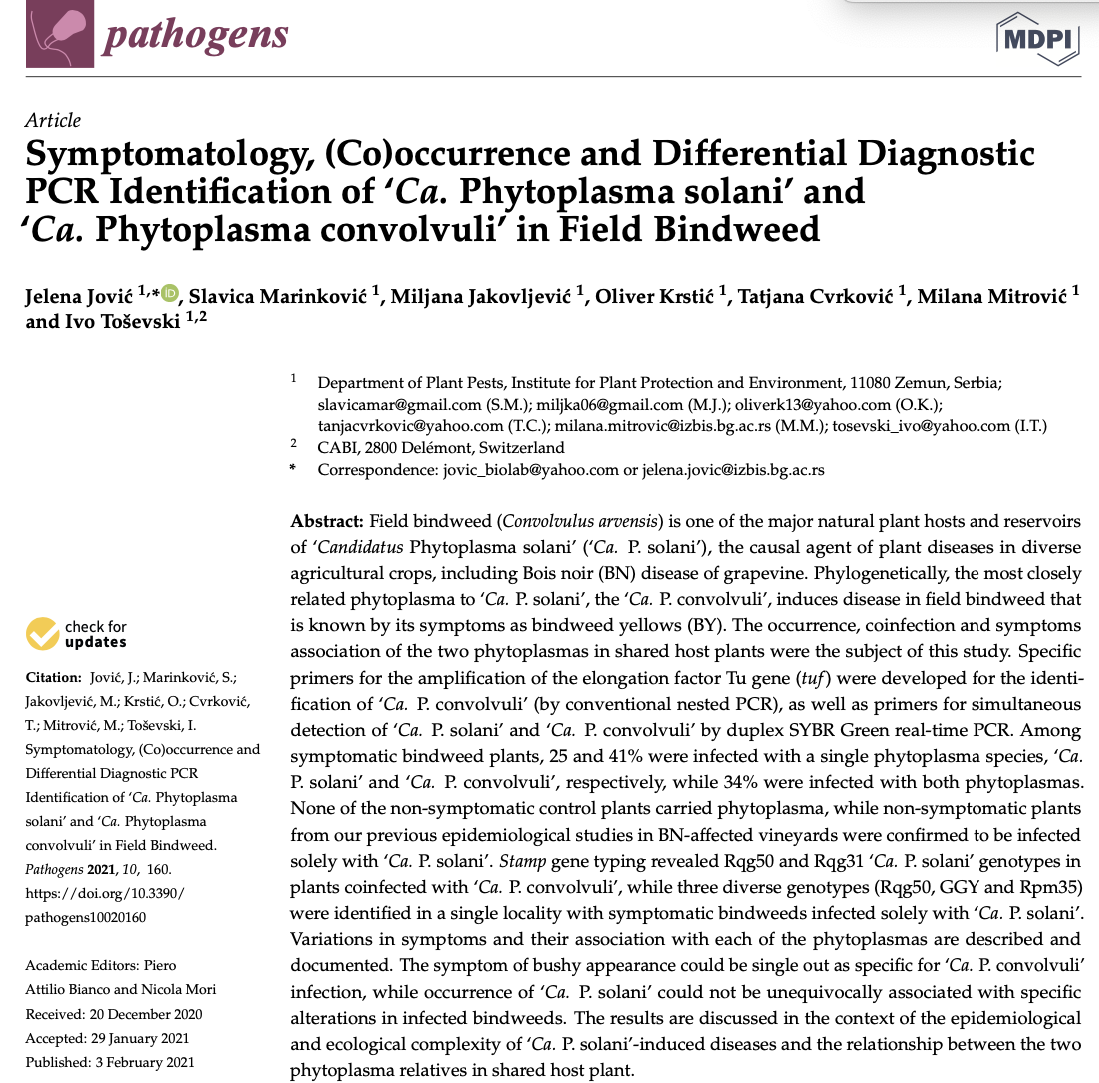
- February 11, 2021
Symptomatology, (Co)occurrence and Differential Diagnostic PCR Identification of ‘Ca. Phytoplasma solani’ and ‘Ca. Phytoplasma convolvuli’ in Field Bindweed
Jelena Jovic, Salivica Marinkovic, Miljana Jakovljevic, Oliver Krstic, Tatjana Cvrkovic, Milana Mitrovic and Ivo Tosevski|Department of Plant Pests, Institute for Plant Protection and Environment, 11080 Zemin, Servia; CABI, 2800 Delemont, Switzerland|Pathogens|2021|10, 160. https://doi.org/10.3390/ pathogens10020160
Field bindweed (C. arvensis) is considered a cosmopolitan weed, found in open habitats, such as roadsides, railroads and agricultural fields, and. In degraded natural areas. Filed bindweeds are natural hosts and plant reservoirs of ‘Candidatus Phytoplasma solani’ (‘Ca. P. solani’) and ‘Candidatus Phytoplasma convolvuli (‘Ca. P. convolvuli’). It is difficult to distinguish the disease causing agent based on symptoms as they are closing related. The aim of this study was to analyse the co-occurrence of Ca. P. solani and Ca. P. convolvuli pathogens in both symptomatic and asymptomatic field bindweeds and the related symptoms associated with diseases. The symptom variations associated with the two pathogens were documented. A fast and cost-effective novel duplex SYBR Green based qPCR was developed on the Magnetic Induction Cycler (MIC) for simultaneous detection and differentiation of ‘Ca. P. solani’ and ‘Ca. P. concolvuli’. The first primer pair, Tuf-Con-Fq/Rq, was designed to match and amplify a 141-bp long tuf gene fragment of ‘Ca. P. convolvuli’ and the second primer pair, Tuf-Sol-Fq/Rg, were designed to amplify a 106-bp long tuf gene fragment of ‘Ca. P. solani’. The ‘Ca. P. convolvuli’ amplicon has 31% GC content, whereas the ‘Ca. P. solani’ amplicon has 41% GC content, allowing in the ability to differentiate the targets based on melt temperatures (78°C vs 81°C respectively). The novel assay was able to clearly differentiate ‘Ca. P. solani’ and ‘Ca. P. concolvuli’ infections in both symptomatic and asymptomatic field bindweeds. It was documented that symptomatic plants infected/co-infected with ‘Ca. P. convolvuli’ had symptoms of bushy appearance, while plants infected solely with ‘Ca. P. solani’ had symptoms of undersized leaves and marginal reddening of leaves.